DESCRIPTION Kanjira
The Kanjira, Khanjira, Khanjiri or Ganjira is a percussion instrument that is native to the Southern Indian states of Tamil Nadu, Karnataka, Andhra and Kerala and belongs to tambourine family. The word Kanjira is derived from the Tamil language and literally means skin with bells. This percussion instrument holds a deep cultural significance and is often used in classical, folk, temple rituals and devotional music in South India. The Kanjira is played in contemporary genres such as fusion music and world music as well.
The shape of Kanjira
The Kanjira has a round, flat frame made traditionally of jackfruit tree, and has a single stretched-out skin on which the player creates percussive sounds. The skin is usually made from goat or lizard skin, and the thickness of the skin and the tension applied while stretching it determines the quality of sound produced by the Kanjira. The Kanjira measures approximately 6-8 inches in diameter and 2-3 inches in depth.
How is the Kanjira played?
The Kanjira is played by holding it in one hand while keeping the other hand free to create sounds. There are also small metal discs attached to the sides of the instrument. These bells, also called jingles, are made of brass or copper and produce a ringing metallic sound when the instrument is struck or shaken. The jingles add a bright, shimmering quality to the sound of the Kanjira and are an integral part of its unique timbre.
The sound of Kanjira
The Kanjira can produce a range of different sounds depending on how it is played, which makes it an incredibly versatile instrument. The sound can be adjusted through the amount of pressure applied to the drumhead and the thickness of the skin. They produce a soft, mellow, and rhythmic sound when played with the fingers, and a high-pitched, metallic and more piercing sound when struck. The sound produced by the Kanjira is unique and creates a captivating and entrancing rhythm. The skilled players can create complex and dynamic rhythmic patterns with the Kanjira.
The Kanjira’s presence in different styles of music
Due to its unique sound, the Kanjira is an essential instrument in traditional South Indian music. It is often used in classical Carnatic music, which is a melody-dominated style characterized by intricate rhythms and soulful melodies. The Kanjira player usually accompanies the singer or other musicians in the melody and adds to the rhythmic texture of the performance.
Apart from classical music, the Kanjira is also widely used in South Indian folk music. It can be found in rural communities, where it is often played during village festivals and religious ceremonies. It is particularly popular in Kerala, where it is used to create a bright and upbeat sound in traditional dance performances like the famous Theyyam and Kathakali.
The Kanjira across the world
The Kanjira is a popular instrument not just in South India but also across the world. In recent years, the popularity of the kanjira has spread beyond South India, with musicians from all over the world incorporating the instrument into their music. This has led to a growth in the availability of high-quality Kanjiras, as well as a greater understanding and appreciation for this unique and versatile instrument.
Internationally renowned artists like V. Selvaganesh expertly play the Kanjira and have taken South Indian classical music to new heights with their performances. Its popularity has led to its inclusion in many musical styles, and it can be heard in Jazz, Fusion, and World Music performances.
Learning to play the Kanjira
Learning to play the Kanjira requires both skill and practice. The instrument can be challenging to master, as it takes a level of dexterity, rhythm, and control to produce the desired sound. However, with the appropriate guidance and dedication, it is an enriching experience to learn to play the Kanjira.
Playing the Kanjira can open up many doors to exploring new music styles and opportunities. The Kanjira is an instrument that is simple yet complex, traditional yet modern, and spectacular in every way. It is no wonder that it continues to charm musicians and listeners alike even after so many centuries.
Kanjira playing techniques
- Finger rolls – commonly used to produce sustained notes, finger rolls involve rolling the fingers across the skin to create a smooth, continuous sound.
- Bass strokes – these are low-pitched sounds produced by striking the rim and drumhead with the index, middle or ring fingers.
- Slaps – these are higher-pitched sounds created by striking the centre of the drumhead with the fingers in a quick, sharp motion.
- Jingles – Kanjiras have small metal discs attached to the frame, which can be played by shaking the drum to produce a tinkling sound.
- Finger tapping – this technique involves tapping the drumhead with the fingertips to produce a staccato sound.
- Thumb strokes – this technique involves lightly tapping the drumhead with the thumb to produce a softer sound than slaps.
Majiddrums‘ Kanjira
Majiddrums’ Kanjira is made of different, entirely handpicked solid woods such as ash-tree or walnut. Majid has incorporated intricate patterns and designs on the surface of the Kanjira using various techniques. He has experimented with different materials to create visually stunning and unique Kanjiras.
Functionality and playability
Majiddrums also focused on the ergonomics of the Kanjira to improve its functionality and playability. He studied the size and shape of the instrument and made adjustments to ensure that it fits comfortably in the hands of the player and produces clear and resonant sounds. He also worked on the construction of the Kanjira to increase its durability and longevity.
Double skin Kanjira
Majiddrums‘ Kanjira striking surface is made of double skin layers fixed together with a special glue. It is applied in a thin layer between the two skin layers. When the glue dries, it becomes like plastic. This increases the resistance of the instrument against moisture.
Another benefit of this glue layer is that it helps to preserve the sound quality of the natural skin.
Tunability
The conventional approach to alter the pitch of a Kanjira involves applying water onto the inner surface of the drum. This technique demands expertise and personalized touch to achieve the desired sound. In more extended performances or high temperature environments, this process may need to be applied multiple times as the drumhead dries out. Nevertheless, if the drumhead becomes overly damp, it will dampen the tone, and the player may need to wait for it to dry.
Majiddrums’ Kanjira is tuneable with a screw system. It can be adjusted by tightening or loosening to create tones and pitches. The playing surface is a goatskin by default, but it can be delivered with a fish skin as well. While goatskin gives you a warmer sound with a sustain, fish skin offers a clean attack sound with little sustain.

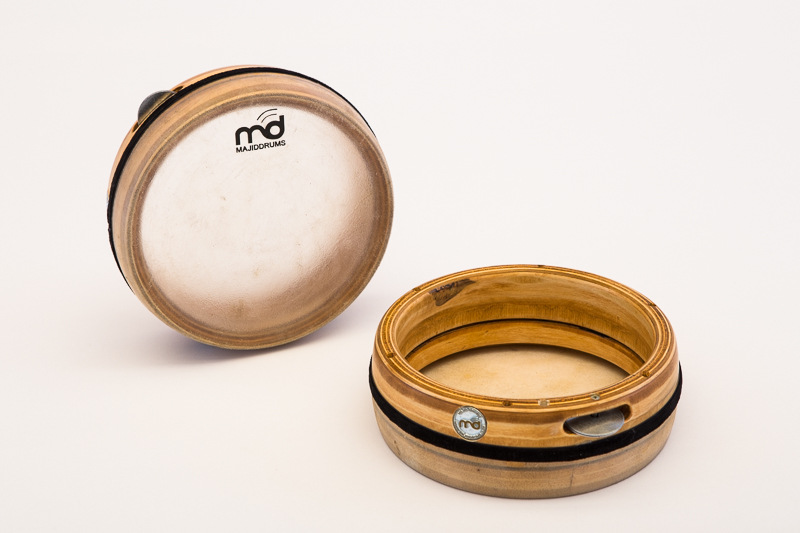
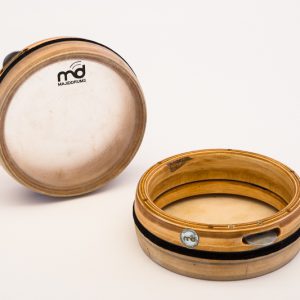
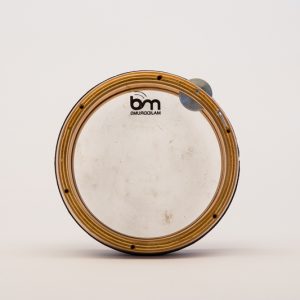
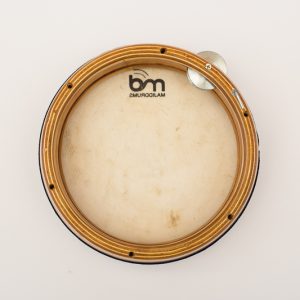
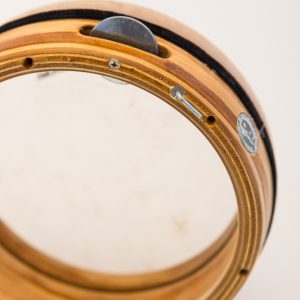
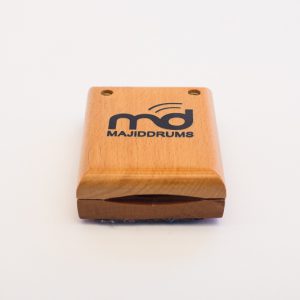
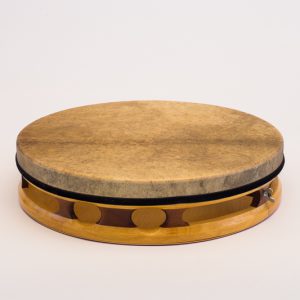
Reviews
There are no reviews yet.